History Collection
Primary Sources: The Atlantic Magazine Archive
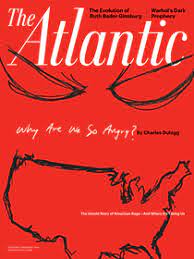 Through the California Digital Library, the Library has access to the Atlantic Magazine Archive that includes the years 1857-2014.
Through the California Digital Library, the Library has access to the Atlantic Magazine Archive that includes the years 1857-2014.
The Atlantic was originally created with a focus on publishing leading writers’ commentary on abolition, education and other major issues in contemporary political affairs at the time. Over its more than 150 years of publication it has featured articles in the fields of politics, foreign affairs, business and the economy, culture and the arts, technology, science and more.
Some of the founding sponsors of the magazine include prominent writers such as Ralph Waldo Emerson, Oliver Wendell Holmes, Sr., Henry Wadsworth Longfellow, Harriet Beecher Stowe and John Greenleaf Whittier.
Primary Sources: International Herald Tribune Archive, 1887-2013
The Library now has access to the The International Herald Tribune Historical Archive (1887-2013), which features the complete run of the International Herald Tribune from its origins as the European Edition of The New York Herald and later the European Edition of the New York Herald Tribune. The archive ends with the last issue of the International Herald Tribune before its relaunch as the International New York Times.
Primary Sources: Women’s Studies Archive
Through the California Digital Library, our Library has access to three modules of Gale’s Women’s Studies Archive.
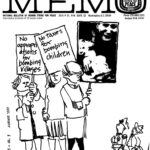 Women’s Studies Archive: Women’s Issues and Identities provides the opportunity to witness history from the female perspective. Offering coverage of the nineteenth and twentieth centuries, the digital archive allows for the serendipitous discovery of commonalities among a variety of archival collections. Global in scope, it presents materials covering the social, political, and professional aspects of women’s lives and offers a look at the roles, experiences, and achievements of women in society. A wide range of primary sources provide a close look at some of the pioneers of women’s history, a deep dive into the issues that have affected women, and the many contributions they have made to society. Within the archive can be found historical records from Europe, North and South America, Africa, India, East Asia, and the Pacific Rim with content in English, French, German, and Dutch.
Women’s Studies Archive: Women’s Issues and Identities provides the opportunity to witness history from the female perspective. Offering coverage of the nineteenth and twentieth centuries, the digital archive allows for the serendipitous discovery of commonalities among a variety of archival collections. Global in scope, it presents materials covering the social, political, and professional aspects of women’s lives and offers a look at the roles, experiences, and achievements of women in society. A wide range of primary sources provide a close look at some of the pioneers of women’s history, a deep dive into the issues that have affected women, and the many contributions they have made to society. Within the archive can be found historical records from Europe, North and South America, Africa, India, East Asia, and the Pacific Rim with content in English, French, German, and Dutch.
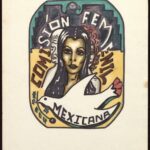 Women’s Studies Archive: Voice and Vision explores critical areas of study including the abolition of slavery, alcohol and temperance movements, pacifism and political activism, domestic service, education, health and hygiene, divorce and social reform, and much more. A vast range of primary sources from 1780 to 2000 span multiple geographic regions, providing an abundance of perspectives on women’s experiences and impact on society around the world.
Women’s Studies Archive: Voice and Vision explores critical areas of study including the abolition of slavery, alcohol and temperance movements, pacifism and political activism, domestic service, education, health and hygiene, divorce and social reform, and much more. A vast range of primary sources from 1780 to 2000 span multiple geographic regions, providing an abundance of perspectives on women’s experiences and impact on society around the world.
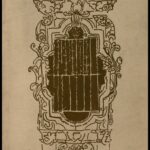 Women’s Studies Archive: Rare Titles from the American Antiquarian Society (1820-1922) covers the nineteenth and twentieth centuries across multiple disciplines, including literature studies, women’s history, gender studies, cultural studies, critical theory analysis, American history, media and journalism, politics, and sociology.
Women’s Studies Archive: Rare Titles from the American Antiquarian Society (1820-1922) covers the nineteenth and twentieth centuries across multiple disciplines, including literature studies, women’s history, gender studies, cultural studies, critical theory analysis, American history, media and journalism, politics, and sociology.
Primary Sources: China and the Modern World: Missionary, Sinology, & Literary Publications
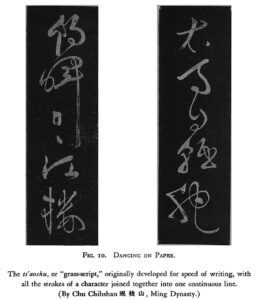 China and the Modern World: Missionary, Sinology, and Literary Periodicals, 1817–1949 is a collection of seventeen English-language periodicals published in or about China during a period of over 130 years extending from 1817 until 1949, when the People’s Republic of China was founded. This corresponds to the periods of the late Qing Dynasty and the Republican Era (1911-1949), when China experienced radical and often traumatic transformations from an inward-looking imperial dynasty into a globally engaged republic with modern approaches to politics, literature, education, public morality, and intellectual life.
China and the Modern World: Missionary, Sinology, and Literary Periodicals, 1817–1949 is a collection of seventeen English-language periodicals published in or about China during a period of over 130 years extending from 1817 until 1949, when the People’s Republic of China was founded. This corresponds to the periods of the late Qing Dynasty and the Republican Era (1911-1949), when China experienced radical and often traumatic transformations from an inward-looking imperial dynasty into a globally engaged republic with modern approaches to politics, literature, education, public morality, and intellectual life.
Periodicals included in the collection:
- The Chinese Recorder (教務雜誌, 1867–1941) was produced by the Protestant missionary community in China that enjoyed a run of 72 years, longer than any other English-language publication in that country. The complete set of the journal, along with its predecessor, the Missionary Recorder, is available in this collection. The journal is regarded today as one of the most valuable sources for studying the missionary movement in China and its influence on Western relations with and perceptions of the Far East.
- West China Missionary News (華西教會新聞, 1899–1943) was established and published in Sichuan, China by the West China Missionary News Publication Committee. The journal aimed to enhance communication among missionaries based in western China and published many articles on the missionary activities in the region.
- The China Mission / Christian Year Book (中國基督教年鑑, 1910–1939) was published under an arrangement between the Christian Literature Society for China and the National Christian Council of China. It started in 1910 as The China Mission Year Book and changed its title to The China Christian Year Book in 1926. This digital version also includes The China Mission Hand-book (1896) and A Century of Protestant Missions in China (1807–1907).
- Educational Review: continuing the monthly bulletin of the Educational Association of China (教育季報, 1907–1938) was the official journal of the Educational Association of China which later changed its name to China Christian Educational Association. Founded in Shanghai in 1907, it was published first as a monthly during 1907–1912 and then as a quarterly during 1913–1938. The journal publishes minutes of the meetings of the Association and reports of affiliated local associations. There were also articles covering Christian colleges and universities founded across China.
- The Canton Miscellany (廣州雜誌, 1831) was a literary journal published in Guangzhou (Canton) between May and December 1831. Anonymously edited, it targets the well-educated English elite. The last two issues contain lengthy articles on the history of Macau, the first ever to be written in English.
- Chinese Miscellany (中國雜誌, 1845–1850) was founded by Walter Henry Medhurst (1796–1857), an English Congregationalist missionary to China. The journal consists of four volumes, introducing China’s silk and tea industry, geography, manufacturing, trade, and customs.
- The Chinese and Japanese Repository of Facts and Events in Science, History, and Art, Relating to Eastern Asia (中日叢報, 1863–1865) was edited by James Summers (1828–1891), a professor of Chinese language of the University of London. The journal documents China and Japan’s often violent reactions to the presence of foreigners from a Western perspective.
- Notes and Queries: on China and Japan (中日釋疑, 1867–1869) was one of the earliest sinology journals. Edited by Nicholas Belfield Dennys (1840–1900) and published in Hong Kong, it focuses on topics such as Chinese history and culture. Japan and Korea are also covered.
- The China Review: or Notes and Queries on the Far East (中國評論, 1872–1901) was arguably the first major Western sinology journal; many of the renowned sinologists of the nineteenth century contributed articles, including James Legge, Herbert A. Giles, Joseph Edkins, John Chalmers, Ernst Faber, Edward L. Oxenham, W. F. Mayers, Alexander Wylie, Edward Harper Parker, and Frederic Henry Balfour.
- The New China Review (新中國評論, 1919–1922) was established by British sinologist Samuel Couling in Shanghai in 1919, aiming to inherit the mantle of The China Review, which was discontinued in 1901. Contributors to its four volumes include such prominent sinologists as Herbert A. Giles and Edward H. Parker.
- The Indo-Chinese Gleaner (印中搜聞, 1817–1822) was a quarterly journal founded by Robert Morrison (1782–1834) and William Milne (1785–1822) in Malacca in 1817. This periodical covered missionary activities, reported on the social, political, religious, military, economic, and cultural affairs of China and other Asian countries, and introduced the literature, philosophy, and history of Asian countries, especially those of China and Southeast Asia.
- Bulletin of the Catholic University of Peking (輔仁英文學志, 1926–1934) was founded in September 1926 and published a total of nine volumes. Each volume contains articles on the university’s developments and achievements, as well as sections devoted to the study of Chinese culture. It ceased publication in November 1934 and gave way to a purely academic journal titled Monumenta Serica.
- The Yenching Journal of Social Studies (燕京社會學界, 1938–1950) was founded in June 1938 and published semi-annually. This journal, which ceased publication in 1950 after releasing the first part of Volume five, provides significant research materials on the history of social studies in China during the Republican period (1911–1949).
- The China Quarterly (英文中國季刊, 1935–1941), founded and run jointly by the China Institute of International Relations, the Pan-Pacific Association of China, and the Institute of Social and Economic Research, was an authoritative journal discussing topics on China’s internal and external affairs. The journal had a stellar editorial and contributor team, including such prominent scholars as Tsai Yuan-pei (蔡元培), Chungshu Kwei (桂中樞), Wu Lien-teh (伍連德), John Benjamin Powell, Hollington Tong (董顕光), and Lin Yu-tang (林語堂).
- T’ien Hsia Monthly (天下月刊, 1935–1941) was published under the auspices of the Sun Yat-sen Institute for the Advancement of Culture and Education. Editors included John C. H. Wu, Wen Yuan-ning, Lin Yu-tang, and others. This cultural and literary journal was dedicated to introducing and interpreting Chinese literature and art for the West and promoting understanding between East and West.
- The China Critic (中國評論週報, 1928–1946) was a weekly founded on 31 May 1928 by a group of Chinese intellectuals who had studied in the United States. Despite the editors’ avowed preference for “nonpolitical” discourse, The Critic’s editorials and articles frequently discussed the presence of imperialism in Shanghai, debated the abolition of extraterritoriality, and advocated equal access to public facilities in the concessions. The editors also participated in wider-ranging discussions about urban affairs.
- The China Year Book (中華年鑑, 1912–1939) was edited by British journalist and publisher H.G.W. Woodhead (1883–1959) with H.T.M. Bell to provide information on China for Westerners. It was published from 1912 to 1939, incorporating documents related to each year’s events in China. Woodhead was the editor of the Peking and Tientsin Times from 1914 to 1930 before moving to Shanghai to write for the Shanghai Evening Post and Mercury and later edit his own journal, Oriental Affairs.
Library Workshops: Advanced Zotero 2 offered October 5 & 6

Advanced Zotero 2 will cover:
- Step-by-step instructions on using Zotfile to store attachments on a cloud server
- Using the Zutilo add-on to manage tags, relate items, and bulk edit entries
- Advanced editing of citations in word processing documents
- Zotero 7 (beta) new features:
- new annotation types in Zotero’s PDF reader
- annotating EPUBs and webpage snapshots in the reader
Register at the Library Workshops site.
October 5, 12:10-1:30 in 223 Doe Library (80 minutes, as in-person workshops seem to take longer)
October 6, 12:10-1:00 via Zoom (50 minutes, the zoom link will be sent to registrants 24 hours in advance of the workshop)
Primary Sources: Behind the Scenes of the Civil Rights Movements

The Library has invested in the creation of Reveal Digital’s Behind the Scenes of the Civil Rights Movement and now has access to the first batch of digitized content on the JSTOR platform. The following information about the collection was shared in Reveal Digital’s announcement:
Covering primarily the 1950s and 1960s, Behind the Scenes of the Civil Rights Movements provides access to primary source documents that focus on how ordinary citizens in the smaller communities viewed, participated in and lived through this historical era. When completed in 2025, the collection will include letters, general correspondence, logs, demonstration plan outlines, transportation logs and plans, meetings, worship services, photographs, newsletters, news reels, interviews and musical recordings from Black, Latine, Native American and Asian American Pacific Islander communities.
The eight compilations from the Atlanta History Center include:
- Alert Americans Association broadside “Martin Luther King…At Communist Training School”
- Atlanta American Council of Christian Churches documents on the Black Manifesto
- Clarence Bacote papers
- Coretta Scott King documents
- Herman L. Turner papers
- Jones family papers of Lovett School
- Roland M. Frye papers
- Southern Regional Council documents
A link to this collection can be found in the History: America guide under Parimary Sources by Topic > Civil Rights and in the Library’s A-Z Database list.
Prensa Libre (Guatemalan Newspaper) Archive Trial at UC Berkeley Library
The Library has started a thirty-day trial of Prensa Libre Newspaper. One can access the resource by authenticating from an off-campus location using the following hyperlink: https://libproxy.berkeley.edu/login?qurl=https%3A%2F%2Fgpa.eastview.com%2Fpren%2F
Currently, the full-text content is available for the issues starting in 1980 through 2022.
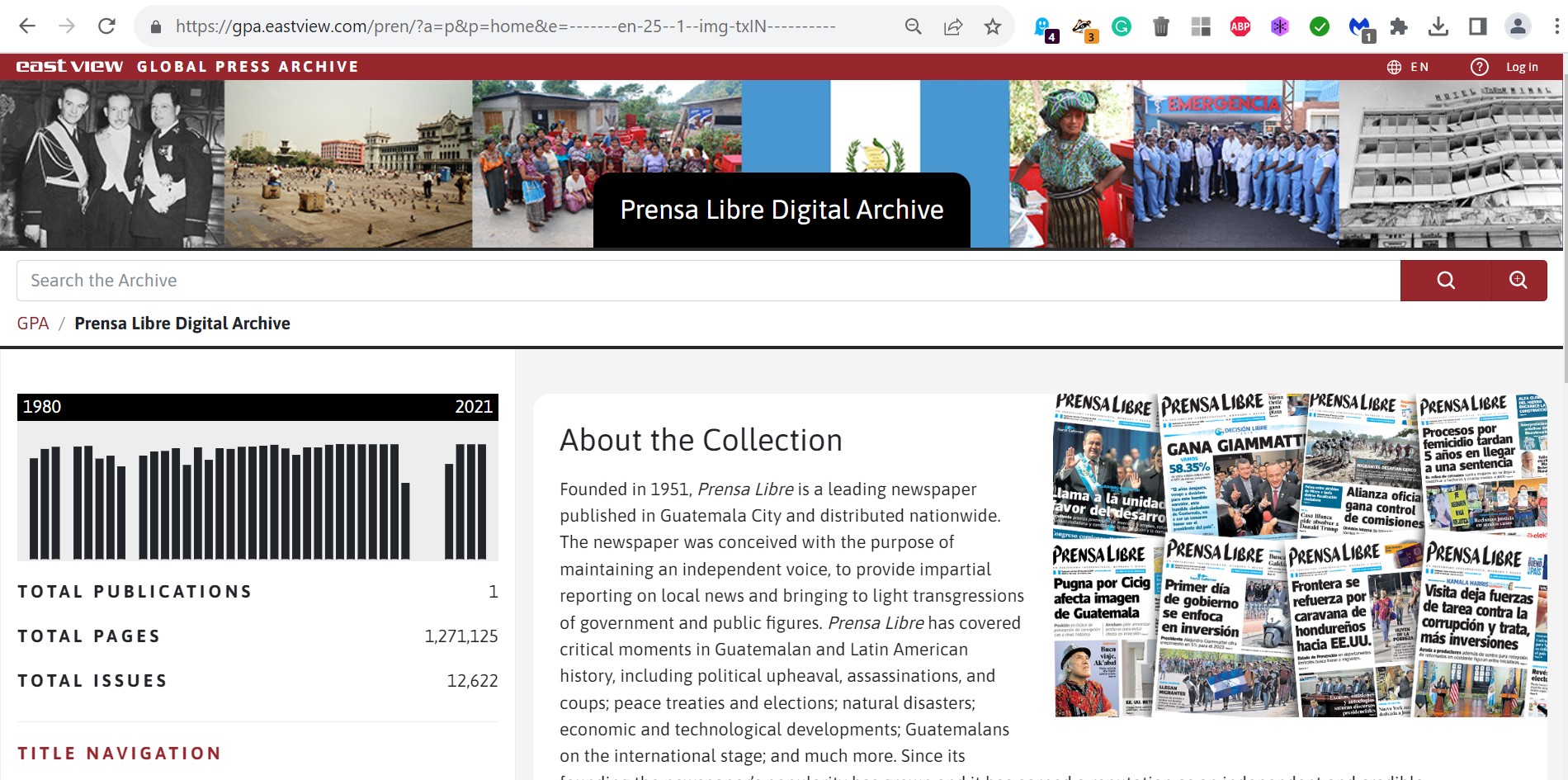
Prensa Libre fue fundado el 20 de agosto de 1951 por Pedro Julio García, Álvaro Contreras Vélez, Salvador Girón Collier, Mario Sandoval Figueroa e Isidoro Zarco Alfasa.
Prensa Libre is a Guatemalan newspaper published in Guatemala City by Prensa Libre, S.A. and distributed nationwide. It was formerly the most widely circulated newspaper in the country and as of 2007 it has the second-widest circulation.[1] It is considered a local newspaper of record. It was founded in 1951. (Source: Wikipedia)
Primary Sources: Reports of the Anglo-American Committee of Inquiry Palestine, 1944-1946
A recent acquisition of the Library, Reports of the Anglo-American Committee of Inquiry Palestine, 1944-1946, provides access to the papers of this committee created in 1945 to “study the situation of Jewish survivors in Europe and the problems connected with their resettlement in Palestine.
“The committee was charged with gathering information and making recommendations on 1) the effect of Jewish immigration and resettlement on the political, economic, and social conditions in Palestine; and (2) the position of surviving Jews in Europe and the possibility of relieving the problem by repatriation or resettlement of the survivors in Palestine and other non-European countries. The committee called for a unitary state rather than partition based on ethnicity or religious profession. The records include AACI reference files, evidence submitted to the committee, transcripts of hearings, AACI reports, and papers of the Anglo-American Cabinet Committee.”
Primary Sources: Testaments to the Holocaust, Documents and Rare Printed Materials from the Weiner Library, London
A recent acquisition, Testaments to the Holocaust, Dococuments and Rare Printed Materials from the Weiner Library, London, provides access to the “first archive to collect evidence from the Holocaust and the anti-semitic activities of the German Nazi party. It contains documentary evidence collected in several different programmes: the eyewitness accounts which were collected before, during and after the Second World War, from people fleeing the Nazi oppression, a large collection of photographs of pre-war Jewish life, the activities of the Nazis, and the ghettoes and camps, a collection of postcards of synagogues in Germany and eastern Europe, most since destroyed, a unique collection of Nazi propaganda publications including a large collection of ‘educational’ children’s’ books, and the card index of biographical details of prominent figures in Nazi Germany, many with portrait photographs. Pamphlets, bulletins and journals published by the Wiener Library to record and disseminate the research of the Institute are also included. 75% of the content is written in German.”
Primary sources: Russian language historical ebook collections
This post highlights some of the Library’s acquisitions of Russian-language historical ebook collections that may have escaped your notice.
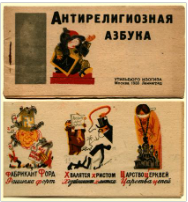 Soviet Anti-Religious Propaganda ebook collection
Soviet Anti-Religious Propaganda ebook collection
East View has digitized a collection of 280 e-books that are most emblematic of Soviet anti-religious fervor. They were published mainly in the 1920s and 1930s on a variety of atheist or anti-religious topics, with titles including Christianity versus Communism, Church versus Democracy, and The Trial of God.
Another collection from East View of 116 ebooks, originally published from 1928 to 1948, relating to the golden age of Soviet Cinema.
An ebook collection of 778 works from Brill Online. It represents works of all Russian literary avant-garde schools, most published betwen 1910-1940. According to the publisher, “the strength of this collection is in its sheer range. It contains many rare and intriguingly obscure books, as well as well-known and critically acclaimed texts, almanacs, periodicals, literary manifests. This makes it a gold mine for art historians and literary scholars alike. Represented in it are more than 30 literary groups without which the history of twentieth-century Russian literature would have been very different. Among the groups included are the Ego-Futurists and Cubo-Futurists, the Imaginists, the Constructivists, the Biocosmists, and the infamous nichevoki – who, in their most radical manifestoes, professed complete abstinence from literary creation.”